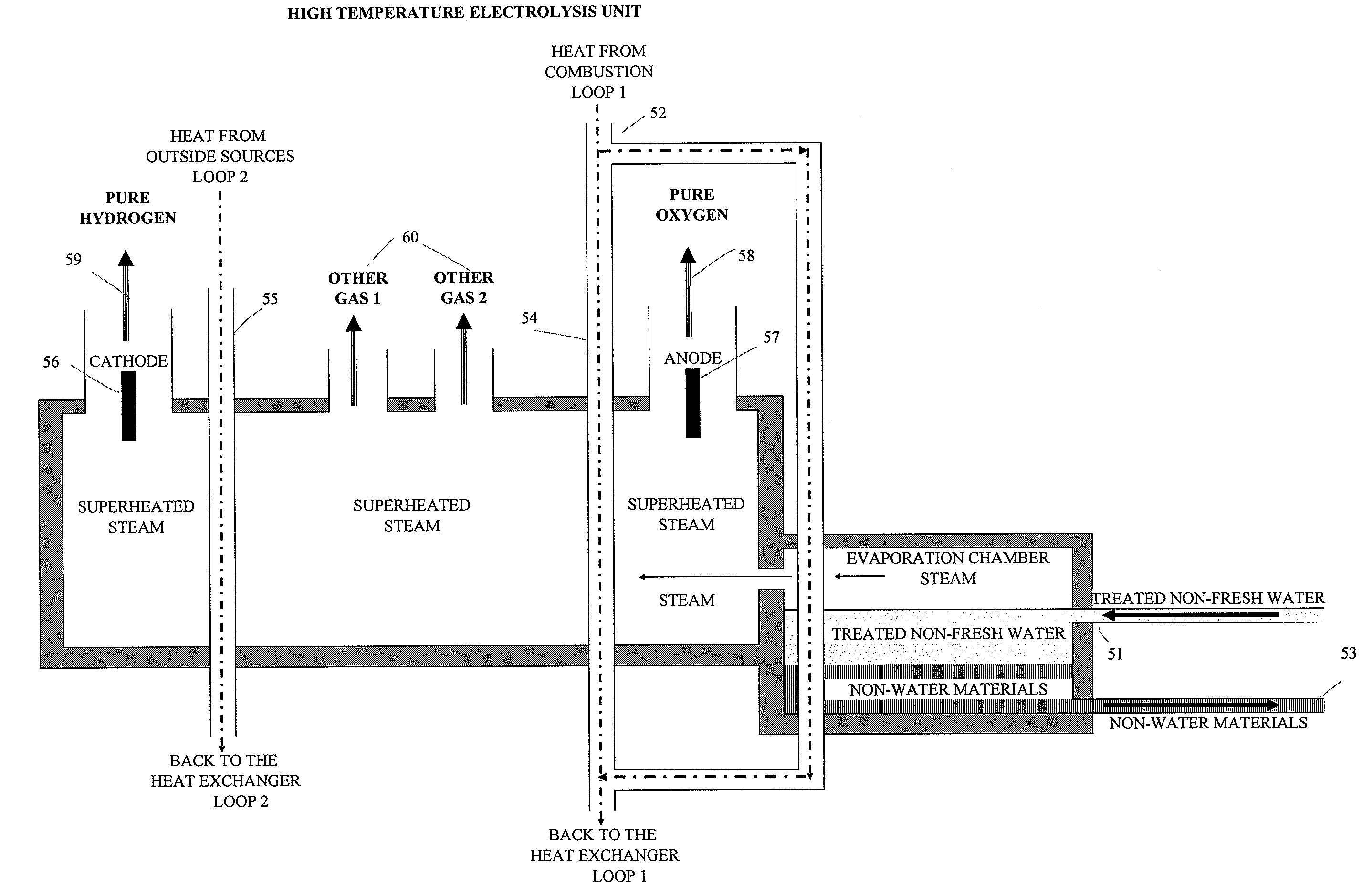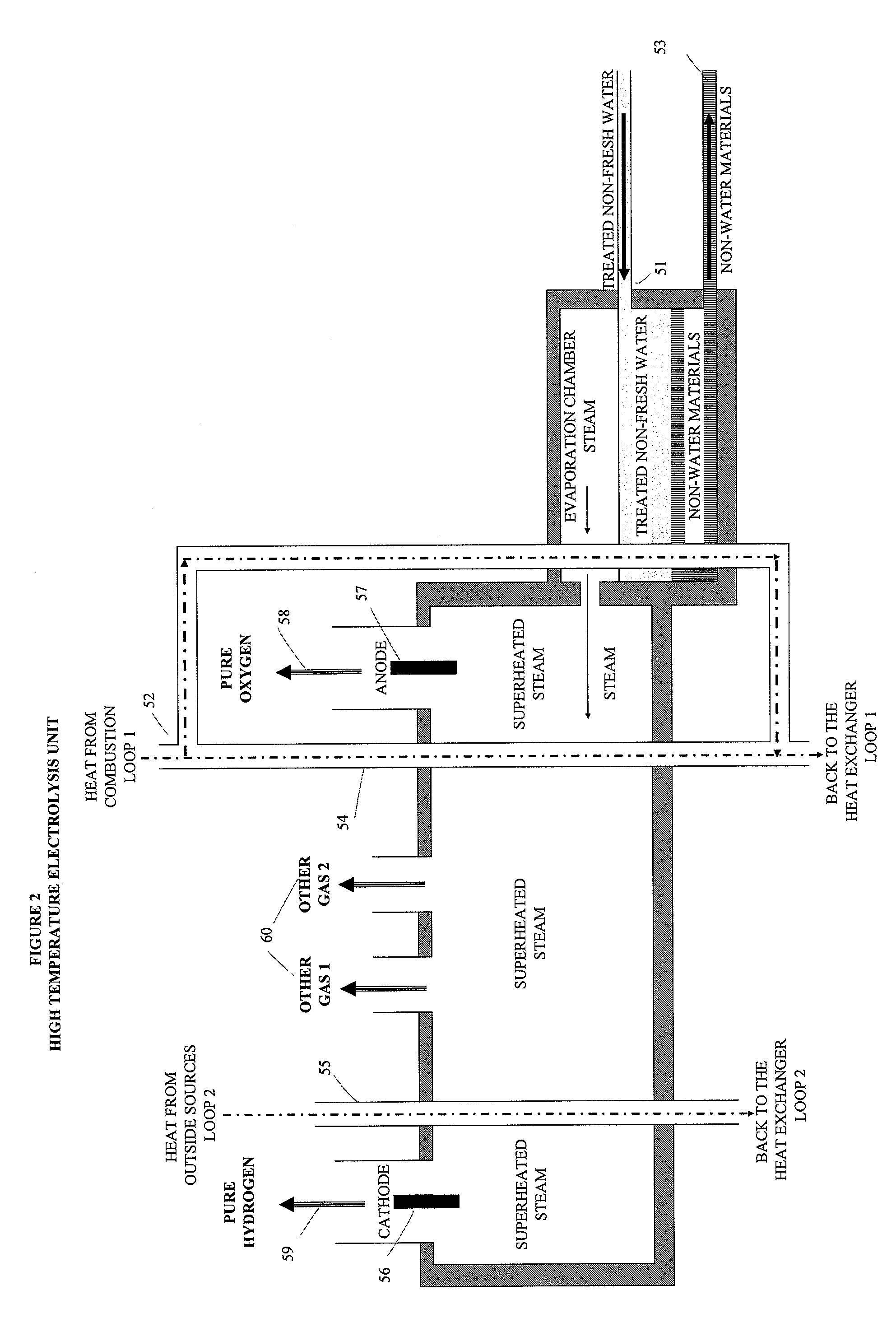System and process for converting non-fresh water to fresh water
a technology of non-fresh water and system, applied in the direction of electrolysis components, filtration separation, lighting and heating apparatus, etc., can solve the problems of affecting the efficiency of electrolysis, the inability to electrolyze water at normal conditions (25° c. and 1 atm) is completely impractical for anything but a small lab experiment, and the scarcity of fresh water is a growing problem in many countries, so as to reduce the cost of oil spillage, reduce the cost of water supply
- Summary
- Abstract
- Description
- Claims
- Application Information
AI Technical Summary
Benefits of technology
Problems solved by technology
Method used
Image
Examples
Embodiment Construction
[0060]Referring initially to FIG. 1, in one embodiment, of the present invention all of the hydrogen and oxygen that is generated by the high temperature electrolysis process is combusted at elevated pressure to produce high pressure high temperature superheated steam. The heat generated through the combustion of hydrogen and oxygen is then extracted by the heat exchanger system and is recycled to be used in the high temperature electrolysis process. The extraction of the heat by the heat exchanger system condenses the superheated steam to produce fresh water.
[0061]The process can be summarized as follows:
[0062]As shown in equation (1), non-fresh water is heated to create supersaturated steam and using the high temperature electrolysis process the supersaturated steam is separated into hydrogen and oxygen. The generated hydrogen and oxygen is then combusted to create supersaturated steam and heat as shown in equation (2). The heat generated by the process of combustion of hydrogen a...
PUM
| Property | Measurement | Unit |
|---|---|---|
| Temperature | aaaaa | aaaaa |
| Temperature | aaaaa | aaaaa |
| Temperature | aaaaa | aaaaa |
Abstract
Description
Claims
Application Information
 Login to View More
Login to View More - R&D
- Intellectual Property
- Life Sciences
- Materials
- Tech Scout
- Unparalleled Data Quality
- Higher Quality Content
- 60% Fewer Hallucinations
Browse by: Latest US Patents, China's latest patents, Technical Efficacy Thesaurus, Application Domain, Technology Topic, Popular Technical Reports.
© 2025 PatSnap. All rights reserved.Legal|Privacy policy|Modern Slavery Act Transparency Statement|Sitemap|About US| Contact US: help@patsnap.com



